上一頁下一頁

溫哥華 雪鴞

芬蘭 流蘇鷸

芬蘭 長耳松鼠

溫哥華 綠頭鴨

挪威 大西洋海鸚

溫哥華 雪鴞

挪威 蠣鴴

芬蘭 黑琴雞

芬蘭 流蘇鷸

芬蘭 流蘇鷸

芬蘭 流蘇鷸

黃龍

喀什米爾 少女

福建霞浦 日出

喀什米爾 達爾湖

陜西 川金絲猴

馬達加斯加 猴麵包樹

格陵蘭 浮冰

馬達加斯加 狐猴

陜西 朱鷺

泰國 變色蜥蝪

成都 大熊貓
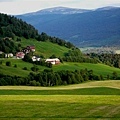
挪威
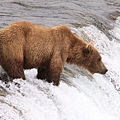
阿拉斯加 棕熊

阿拉斯加 北極光

冰島 大西洋海鸚

肯亞 斑馬

肯亞 小獵豹

印度 拉達克
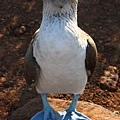
加拉巴哥群島 藍腳鰹鳥

坦桑尼亞 斑鼠鳥

坦桑尼亞 馬賽族

四川 成都 戲角

阿根廷 伊瓜蘇瀑布

尼泊爾

日本白川鄉 合掌村

南美洲 加拉巴哥群島 紅腳鰹鳥

南美洲 加拉巴哥群島 小軍艦鳥

日本富士山

中國 九寨溝 五花海

南極 帝王企鵝

南極 帝王企鵝

西藏 羊卓雍措(湖)

西藏 羊卓雍措(湖)

西藏 羊卓雍措(湖)

加拿大東部

加拿大東部

加拿大東部

希臘

納米比亞

納米比亞

加拿大 北極熊

亞南極 皇家企鵝

泰國蝴蝶

澳洲 日全蝕

加拿大北極熊

亞南極 皇家企鵝

亞南極 成千上萬的皇家企鵝

衣索匹亞 摩西族 大唇婦女

緬甸 長頸族

新幾內亞 瑞吉亞納天堂鳥

新幾內亞 瑞吉亞納天堂鳥

西班牙 歐洲蜂虎 (黃喉蜂虎)

西班牙 歐洲蜂虎 (黃喉蜂虎)

印度 孟加拉虎
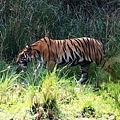
印度 孟加拉虎

哥斯大黎加 草莓箭毒蛙

哥斯大黎加 豔彩葉蛙

中國 九寨溝 五花海

泰國 斑闊嘴鳥
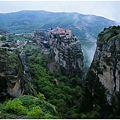
希臘 美堤歐拉山谷 浮懸修道院

希臘 愛琴海 米克諾斯

希臘 愛琴海 聖托里尼

中國 吉林 松花江畔 霧淞奇景

非洲 坦桑尼亞 灰頭翡翠

天涯海角展1
上一頁下一頁
相片最新留言
相簿列表資訊
- 最新上傳:
- 2019/12/04
- 全站分類:
- 攝影寫真
- 本日人氣:
- 0
- 累積人氣:
- 4370




lttant 謝謝讚賞
難得看見的光景 都在你這兒呢 ! 感謝分享美照 !
忘塵 謝謝賞圖
哇~~~
看來妳的格子已經弄好囉!! ^^
張張精華...讚!!
勾起好多回憶...
剛看完DIGPHOTO-用鏡頭享受生命 許展源專訪
便進入您的相簿,依樣精彩,依樣讓人羨慕~借分享喔,謝謝!
住佳節愉快~
目不暇給、如獲至寶,
內心禁不住要說 ~ 讚!讚!讚!
照片是不是少了一些?以前感覺有好多照片。
好棒
美拍欣賞~讚啊!!願 一 切順心舒暢喔~
常見的半導體材料有矽、鍺、砷化鎵等
/
晶片測試
晶片處理高度有序化的本質增加了對不同處理步驟之間度量方法的需求。晶片測試度量裝置被用於檢驗晶片仍然完好且沒有被前面的處理步驟損壞。如果If the number of dies—the 積體電路s that will eventually become chips—當一塊晶片測量失敗次數超過一個預先設定的閾值時,晶片將被廢棄而非繼續後續的處理製程。
/
晶片測試
晶片處理高度有序化的本質增加了對不同處理步驟之間度量方法的需求。晶片測試度量裝置被用於檢驗晶片仍然完好且沒有被前面的處理步驟損壞。如果If the number of dies—the 積體電路s that will eventually become chips—當一塊晶片測量失敗次數超過一個預先設定的閾值時,晶片將被廢棄而非繼續後續的處理製程。
/
步驟列表
晶片處理
濕洗
平版照相術
光刻Litho
離子移植IMP
蝕刻(干法蝕刻、濕法蝕刻、電漿蝕刻)
熱處理
快速熱退火Annel
熔爐退火
熱氧化
化學氣相沉積 (CVD)
物理氣相沉積 (PVD)
分子束磊晶 (MBE)
電化學沉積 (ECD),見電鍍
化學機械平坦化 (CMP)
IC Assembly and Testing 封裝測試
Wafer Testing 晶片測試
Visual Inspection外觀檢測
Wafer Probing電性測試
FrontEnd 封裝前段
Wafer BackGrinding 晶背研磨
Wafer Mount晶圓附膜
Wafer Sawing晶圓切割
Die attachment上片覆晶
Wire bonding焊線
BackEnd 封裝後段
Molding模壓
Post Mold Cure後固化
De-Junk 去節
Plating 電鍍
Marking 列印
Trimform 成形
Lead Scan 檢腳
Final Test 終測
Electrical Test電性測試
Visual Inspection光學測試
Baking 烘烤
/
有害材料標誌
許多有毒材料在製造過程中被使用。這些包括:
有毒元素摻雜物比如砷、硼、銻和磷
有毒化合物比如砷化三氫、磷化氫和矽烷
易反應液體、例如過氧化氫、發煙硝酸、硫酸以及氫氟酸
工人直接暴露在這些有毒物質下是致命的。通常IC製造業高度自動化能幫助降低暴露於這一類物品的風險。
/
Device yield
Device yield or die yield is the number of working chips or dies on a wafer, given in percentage since the number of chips on a wafer (Die per wafer, DPW) can vary depending on the chips' size and the wafer's diameter. Yield degradation is a reduction in yield, which historically was mainly caused by dust particles, however since the 1990s, yield degradation is mainly caused by process variation, the process itself and by the tools used in chip manufacturing, although dust still remains a problem in many older fabs. Dust particles have an increasing effect on yield as feature sizes are shrunk with newer processes. Automation and the use of mini environments inside of production equipment, FOUPs and SMIFs have enabled a reduction in defects caused by dust particles. Device yield must be kept high to reduce the selling price of the working chips since working chips have to pay for those chips that failed, and to reduce the cost of wafer processing. Yield can also be affected by the design and operation of the fab.
Tight control over contaminants and the production process are necessary to increase yield. Contaminants may be chemical contaminants or be dust particles. "Killer defects" are those caused by dust particles that cause complete failure of the device (such as a transistor). There are also harmless defects. A particle needs to be 1/5 the size of a feature to cause a killer defect. So if a feature is 100 nm across, a particle only needs to be 20 nm across to cause a killer defect. Electrostatic electricity can also affect yield adversely. Chemical contaminants or impurities include heavy metals such as Iron, Copper, Nickel, Zinc, Chromium, Gold, Mercury and Silver, alkali metals such as Sodium, Potassium and Lithium, and elements such as Aluminum, Magnesium, Calcium, Chlorine, Sulfur, Carbon, and Fluorine. It is important for those elements to not remain in contact with the silicon, as they could reduce yield. Chemical mixtures may be used to remove those elements from the silicon; different mixtures are effective against different elements.
Several models are used to estimate yield. Those are Murphy's model, Poisson's model, the binomial model, Moore's model and Seeds' model. There is no universal model; a model has to be chosen based on actual yield distribution (the location of defective chips) For example, Murphy's model assumes that yield loss occurs more at the edges of the wafer (non-working chips are concentrated on the edges of the wafer), Poisson's model assumes that defective dies are spread relatively evenly across the wafer, and Seeds's model assumes that defective dies are clustered together.[25]
Smaller dies cost less to produce (since more fit on a wafer, and wafers are processed and priced as a whole), and can help achieve higher yields since smaller dies have a lower chance of having a defect. However, smaller dies require smaller features to achieve the same functions of larger dies or surpass them, and smaller features require reduced process variation and increased purity (reduced contamination) to maintain high yields. Metrology tools are used to inspect the wafers during the production process and predict yield, so wafers predicted to have too many defects may be scrapped to save on processing costs.[26]